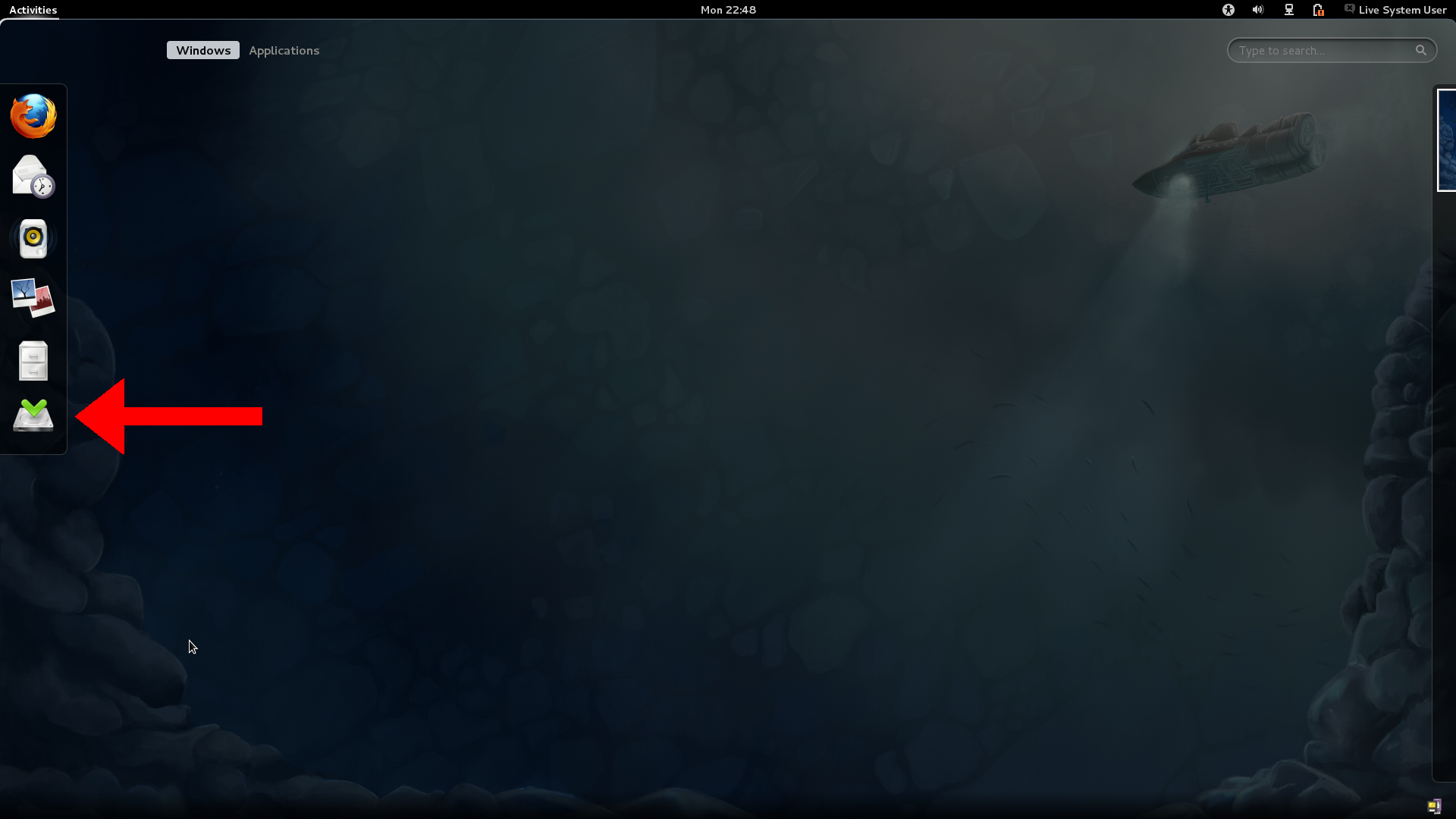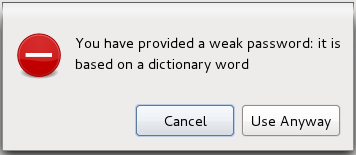Fedora 16 And GNOME Shell: Tested And Reviewed
Ubuntu and Mint don't want it; Linus called it an “unholy mess.” While most other distros are passing up or postponing GNOME Shell, Fedora is full steam ahead. Does Red Hat know something the rest of us don't? Or is GNOME 3 really as bad as everyone says?
Fedora 16 Installation: Phase One
The live CD download of Fedora is separate from the Installation DVD. While you can use the live CD to install Fedora onto a hard drive, it will only install a limited number of applications. You need the complete installation DVD to get the full Fedora experience.
As stated earlier, one notable application missing from the live CD is LibreOffice. Of course, you can install it from the package manager after Fedora is set up. Considering the size of the DVD ISO and the painfully slow DVD installation, using the live CD and then installing missing applications is the quicker approach.
The Fedora 16 installation is much improved over Linux distros of yesteryear. But the experience still isn't as polished as Ubuntu and its derivatives. For example, the wording of option descriptions isn't as end-user oriented, and the screen switches to a CLI briefly several times during the installation.
The Fedora installation procedure occurs in two stages. The first part begins in the live CD desktop and the second occurs upon first boot. To initialize the first phase, click the live CD installer, located in the Dash section of the Activities overview (move the mouse to the top-left corner).
When the installer begins, select a language:
Next, choose between a Basic Storage Device (like a hard drive or SSD), or a Specialized Storage Device (like networked storage). For this review, and in most normal environments, selecting Basic Storage Device is the way to go.
After the type of storage device is selected, a hostname must be chosen. This is how the system is identified on a network.
Get Tom's Hardware's best news and in-depth reviews, straight to your inbox.
Next up is the obligatory time zone selection screen.
Next, create a root password. Unlike Ubuntu, this does not have to be the same password as the primary user. There is an option to enter a different user password during the second stage of the installation.
If the password is deemed too weak, what can only be described as a “windowlet” spawns out of the title bar, informing you of this and allowing you to change the password. This is totally optional; you can keep that weak password if you want.
Now it's time to choose a partitioning scheme. Options here include: Use All Space, Replace Existing Linux System(s), Shrink Current System, Use Free Space, and Create Custom Layout. Since Fedora 15 is going on one of the drives used in our recent Ubuntu 11.10 review, the option to replace the existing Linux partitions appears. On a blank drive, it wouldn't. Note that, unlike Ubuntu, there is no "Install Them Side-By-Side" option for easy dual-booting.
After you choose the partitioning scheme, you have to pick the drive on which Fedora is to be installed. In our example, a Kingston DataTraveler 2.0 USB thumb drive storing the Fedora 16 live media, a Kingston DataTraveler DT 100 G2 holding essential testing files, and a Seagate Barracuda 500 GB hard drive are listed. Because the Seagate hard drive is our destination device, we move it to the right-hand pane.
Another “windowlet” appears asking if you are sure about the destination drive. Be certain here; this cannot be undone.
Now it's just a waiting game as phase one is completed. When it finishes, you'll be greeted by a congratulatory screen. You can restart the computer at any time after that. In order to do so, log out and then restart from the log-in screen. When the computer restarts, make sure the live media is no longer inserted. The second phase of the Fedora 16 installation should begin.
Current page: Fedora 16 Installation: Phase One
Prev Page Fedora 16 At A Glance Next Page Fedora 16 Installation: Phase Two-
gz3ro I think the akmod graphics drivers (also found in the rpmfusion repository) would be better than simply the proprietary drivers because they also work after kernel updates.Reply -
Verrin I'm really disappointed with the direction Linux has taken in its user interfaces. I was a big fan of Ubuntu until they switched to Unity, and since then I've been jumping from distro-to-distro trying to find a desktop environment that feels comfortable, isn't terribly difficult to wrap my head around, and that is still powerful. I was using GNOME3 for a while with Linux Mint, but even with the heavy extensions, there are certain functions that I can't quite replicate from the GNOME2 heyday. I wasn't able to get into KDE or XFCE either. They feel aged and aren't quite as sleek as other modern desktop environments, even if you try to fix that by adding customs skins.Reply
In the end, I'm downgrading to a much older distro of Ubuntu, and supplementing it with Windows 7. I'll be keeping an eye in the coming years to see how these rusty GUI releases turn out-- hopefully for the better. But for now, linux has lost a lot of its useability and it's flare. I'll miss the days when upgrading to a newer distro actually felt like an upgrade, but maybe after all these mistakes, developers will learn and make Linux exciting again. I'll be waiting to see. -
Good grief. What I wouldn't have done years ago for a job that would ask me to write a review on something that would obsolete itself in six months.Reply
Nobody, IMHO, who actually uses a computer for anything of value wastes their time with Fedora. You can't upgrade it, so your own personal enhancements and bug fixes are lost. Features you like are abandoned for broken replacements. Fedora is a nightmare and has been since it began. I began the adventure years ago with Red Hat 5 and finally gave up and moved to more useful distros after Fedora 8. Fedora is now for the masochistic.
On the other hand, if you like superficiality, as in wallpaper and clock positions, and enjoy the animated struggle that comes with installing something new all the time and reporting bugs then Fedora is a good thing. -
yumri one thing which i would have liked to see on the comparesion would be open time of a Libre Word Processing file, close time of that file, open time of a database file, close time of it, open time of Firefox, close time of Firefox, open time of a typical website like this one, close time of it, install time of the OS, how fast does it run a batch file or equivalent in the OS, and etc. like that things which we actually do a lot besides gaming.Reply -
yumri It also seemed like they had a basis towards the GUI way of doing things and thought all users had forsaken CLI scripting for their installs and updates. as if you are getting Fedora you most likely know it was command line based in the start and really is still easier to do everything from command line then from any other route well Ubuntu is made with the GUI interface in mind so things are easier to do with that then with command line mainly because they hid the terminal screen in the newer versions of it.Reply
With that Fedora is also made for workstations and Ubuntu made for end user support 2 differnet applications so why only show benchmarks of end user things and not anything on network support, domain support, VM thin client viability, accessing files from the network, etc. like that things which Fedora is good at not just things which Ubuntu is I think this article was basised and another should be made with more benchmarks to not be as basised towards one or the other. -
amdfangirl One of these days, developers of GUIs will realise going "forward" doesn't equate to an increase of ease of use and functionality.Reply
Unity, Metro, GNOME 3, Etc.
Alas, I must suffer each day for the Wacom preferences panel in GNOME settings. Ties me to GNOME 3 (or a derivative). How silly. -
palladin9479 Now I'm waiting for them to do a Solaris 10 or 11 review. Their both available on x86 so they don't even need to purchase new hardware. Come on it's a "real mans" OS.Reply -
You've completely missed extensions.gnome.org and gnome-tweak-tool, and as a result your review is not an accurate reflection of gnome-shell. Gnome-tweak-tool gives things like "Have file manager handle the desktop" and "Trash icon visible on desktop", plus shell, window, and gtk theme selection, font configuration, and gnome-shell extension management. Extensions.gnome.org provides, well, gnome-shell extensions. Things like "Static Workspaces", which gives you a fixed number of workspaces. Or "Alternative Status Menu", which puts power, reboot, suspend, and hibernate on your status menu. Or "Applications Menu", which provides a Gnome2-like list of windows on the current workspace.Reply
Now, I admit that neither of these configuration options are immediately visible to a new user. Despite that, your review is bad, and you should feel bad. -
zhihao50 graph for POV-Ray is wrong, you said both of linux finished 4min before windows yet the graph show the other way around.Reply -
adamovera Cowardly AnonYou've completely missed extensions.gnome.org and gnome-tweak-tool, and as a result your review is not an accurate reflection of gnome-shell. Gnome-tweak-tool gives things like "Have file manager handle the desktop" and "Trash icon visible on desktop", plus shell, window, and gtk theme selection, font configuration, and gnome-shell extension management. Extensions.gnome.org provides, well, gnome-shell extensions. Things like "Static Workspaces", which gives you a fixed number of workspaces. Or "Alternative Status Menu", which puts power, reboot, suspend, and hibernate on your status menu. Or "Applications Menu", which provides a Gnome2-like list of windows on the current workspace.Now, I admit that neither of these configuration options are immediately visible to a new user. Despite that, your review is bad, and you should feel bad.See pages 12 through 16.Reply









